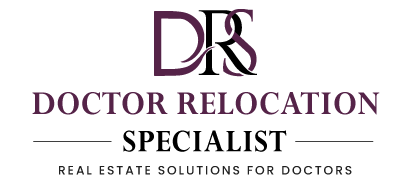With the growing need for healthcare services and the ongoing evolution of the medical landscape, understanding healthcare provider moving solutions is crucial for you as a physician. Navigating relocation or practice transitions can be daunting, but knowing your options can make the process smoother. In this blog post, we will explore key considerations and practical tips that will empower you to make informed decisions during your move, ensuring that your focus remains on providing excellent patient care while adapting to your new environment.


The Financial Landscape of Moving Healthcare Practices
Understanding the financial implications of relocating your healthcare practice can significantly impact the success of your transition. Expenses such as moving costs, renovations, and new equipment can quickly add up, so assessing your budget thoroughly is imperative for a smooth practice relocation. Establishing a clear financial plan will help you navigate the complexities involved and ensure your practice remains financially viable during and after the move.
Hidden Costs and Budgeting for Relocation
Moving your practice can introduce numerous hidden costs that might not be immediately apparent, such as permits, utilities setup, signage, and potential downtime during the transition. These expenses can derail your budget if not accounted for upfront. Developing a detailed budget that includes a contingency for unforeseen costs can help you maintain control over your finances and avoid compromising your services during the relocation process.
Funding Options: Grants, Loans, and Financial Assistance
Exploring funding options can ease the financial burden associated with relocating your healthcare practice. Various resources are available, including grants specifically designed to support healthcare providers in expansion or relocation. Additionally, traditional loans from banks, specialized healthcare lenders, and community development financial institutions can provide the capital required for moving expenses and renovations.
When searching for funding options, consider federal and state grants aimed at enhancing healthcare access or improving practice facilities. The Small Business Administration (SBA) also offers loan programs tailored to healthcare providers, often featuring favorable repayment terms and lower interest rates. Additionally, local philanthropic organizations may provide financial assistance to bolster healthcare services in your community. With the right funding plan in place, you can minimize financial strain and focus on maintaining quality care during your transition.
Choosing the Right Location: Demographics and Market Trends
Selecting the ideal location for your practice requires a deep look into local demographics and market trends. Analyze the population’s age, income levels, and insurance coverage to understand the potential patient base. Consider growth projections for the area, as thriving neighborhoods often draw more patients. Evaluating changes in healthcare policies and nearby facilities can also shape your decision, providing insight into which demographics will be more inclined to access your services.
Analyzing Patient Access and Population Statistics
Assessing patient access involves examining transportation options, local hospital proximity, and the overall accessibility of your future location. Population statistics are vital in understanding the health needs of the community. For example, analyzing age distribution can help identify prevalent health issues—like increased diabetes rates in older populations—allowing you to tailor your services accordingly.
The Impact of Geographic Competitors on Practice Viability
The presence of other healthcare providers in your chosen area can significantly affect your practice’s viability. Identifying established practices and their specialties enables you to find niches that are underserved, ultimately guiding your service offerings. Engaging with local healthcare networks can also provide insight into patient referral patterns and existing competitive dynamics, helping you strategize effectively to capture a loyal patient base.
Understanding your competition goes beyond simply knowing who’s nearby; it encompasses their reputations, quality of care, and specific services offered. For instance, if multiple providers specialize in cardiology, yet few focus on preventative care, you might adapt your practice to fill that gap. Utilizing tools like SWOT analysis can also assist in identifying your strengths and weaknesses compared to competitors. Balancing the competitive landscape with strategic marketing will enhance your practice’s visibility and attract patients looking for personalized treatment options.
Preparing for a Smooth Transition: Logistical Considerations
Navigating the moving process involves careful planning and organization to ensure a seamless transition. You’ll want to start by evaluating your current setup and identifying what equipment, supplies, and personnel will accompany you to your new location. Establish a moving timeline that accounts for every detail from the packing of medical equipment to setting up utilities at your new site, ensuring you minimize downtime for your practice. Considerations such as transportation arrangements and the coordination of your moving team will also play a significant role in your overall strategy.
Key Steps in Planning Your Move Timeline
Creating a detailed move timeline is vital for maintaining the continuity of your practice. This should include milestones such as securing your new space, notifying your staff, organizing patient care coverage during the move, and coordinating logistics with moving professionals. Aim to break down the larger project into manageable phases, allowing for flexibility while ensuring all vital tasks are tracked and completed on schedule.
Managing Patient Communication and Retention
Effective communication with your patients about the move can significantly impact retention and satisfaction. Notify them early through various channels such as personal letters, email updates, and announcements in your office or on your website. Providing details about the new location, any changes in services, and a timeline will help alleviate concerns. Assuring them that their care continues uninterrupted while fostering an atmosphere of transparency builds trust and encourages loyalty during this transition. Keeping patient engagement high throughout the process will enhance your practice’s reputation and visibility in the new community.
Specific strategies for managing patient retention during a move involve implementing targeted follow-up communications. After announcing your move, set a schedule to reach out individually to patients with upcoming appointments. Offering reassurances about continuity of care and providing clear directions to the new location will emphasize your commitment to their health and wellbeing. Consider hosting an open house at the new facility as part of your marketing plan, allowing patients to familiarize themselves with the space and meet your staff. Such initiatives go a long way in maintaining the relationships you’ve built over the years, ultimately ensuring a loyal patient base in your new practice environment.
The Role of Technology in Modern Healthcare Moving Solutions
Technology has revolutionized how healthcare providers approach the logistics of moving a practice. From sophisticated project management software to cloud-based patient record systems, these tools streamline the relocation process, ensuring minimal disruption to patient care. By harnessing technology, you can effectively manage timelines, coordinate teams, and safeguard sensitive data, enhancing the overall moving experience.
Tools and Platforms for Efficient Practice Relocation
Numerous digital platforms exist to support your relocation efforts, including project management applications like Trello or Asana. These platforms help you organize tasks, set deadlines, and delegate responsibilities among your staff effectively. Additionally, utilizing electronic medical records (EMR) systems that facilitate smooth data transfers ensures that patient information remains accessible, increasing efficiency as you transition to your new location.
Innovations in Telehealth: Bridging Gaps during Transition
Telehealth services play a vital role in maintaining patient engagement while you relocate your practice. Integrating virtual care options allows for continuous communication with patients, ensuring their needs are met during the transition period.
Telehealth innovations include various virtual platforms equipped with video conferencing, secure messaging, and online appointment scheduling. These features not only keep patients informed but also provide continuity of care, allowing you to conduct consultations while managing the logistical complexities of the move. Statistics indicate that practices utilizing telehealth can see up to a 30% increase in patient retention rates during transitions, as patients feel supported and connected despite the changes. By embracing these digital solutions, you ensure that the quality of care remains consistent, fostering trust and loyalty among your patient base during the relocation.
Expert Insights: Learning from Relocation Successes and Failures
Gleaning insights from those who have successfully navigated practice relocation can shed light on effective strategies and common missteps. By examining these personal experiences, you can better prepare for the challenges and seize opportunities that may arise during your transition. Learning from others’ journeys not only aids in building a road map for your own move but also highlights the nuances of establishing a successful healthcare practice in a new location.
Interviews with Physicians Who Made the Leap
Speaking with physicians who have recently relocated their practices unveils a wealth of knowledge about the process. Their stories often reveal unique challenges, such as managing a patient influx or adapting to local healthcare regulations. These firsthand accounts can inspire confidence and provide practical insights to help you mitigate potential obstacles in your own move.
Common Pitfalls and Lessons Learned
Many physicians encounter pitfalls during their relocation, often related to financial planning, patient retention, or local market understanding. By identifying these common issues, you can strategically avoid them. For example, failing to assess the competition in the new area can lead to unforeseen hurdles. Instead, prioritize thorough research and outreach to ensure your practice is positioned for success from the outset.
The impact of overlooking thorough market research becomes apparent as many physicians encounter difficulty maintaining their patient base post-relocation. Transitioning to a new community without considering existing local practices may lead to unforeseen competition and reduced patient engagement. Additionally, underestimating the importance of financial planning can result in unexpected operational costs during the adjustment period. Recognizing these challenges early can guide effective strategies to mitigate risks and enhance your overall relocation experience.
Summing up
With this in mind, understanding healthcare provider moving solutions is imperative for you as a physician looking to transition your practice or relocate. By gaining insights into logistics, managing patient records, and ensuring continuity of care, you can effectively streamline the moving process and maintain your professional integrity. Whether you are moving to a new facility or launching on a new practice venture, equipping yourself with the right knowledge will enable you to navigate the complexities of relocation with confidence and efficiency.

